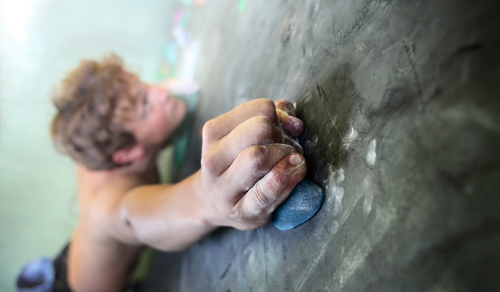
The pulley system in your fingers act like belts that strap the flexor tendons (the muscles that flex the fingers) to the finger bones. Another analogy is that the pulleys are broader, pliable version of the eyelets of a fishing rod, and serve the same mechanical purpose: to hold the flexor tendons securely against the bones so that they do not bowstring away when the fingers are bent (flexed, as curling around a handlebar). When the tendons bowstring, finger range of motion is decreased and the skin can be tented by the tendons as they pull away from the bone.
The pulley system starts at the base of the fingers in the palm and extends to the last fingertip joint. There are 8 separate pulleys in each finger, but only two are really important: the pulley between the knuckle at the base of the finger and the first finger joint, and the pulley between the two distal finger joints.
Pulley injuries are uncommon but can occur from deep lacerations to the finger, which can cut one or more pulleys. The pulleys can also rupture when excessive force is applied to the fingertip. This occurs most often in rock climbers who will often support their full body weight with just 2 or 3 fingers.
Patients will present to the hand surgeon complaining of finger pain, swelling, and limited finger motion. An MRI will usually demonstrate the torn pulley and the tendons separated (bowstrung) from the bone.
Non-surgical treatment for partial tears (when the tendons are still snug against the bone) include wearing a tight ring over the injured pulley. A custom made plastic ring splint serves as a “external pulley” and is worn full time for 6 weeks while the pulley heals. Complete tears resulting in bowstringing are treated by surgical reconstruction of the damaged pulley using a free piece of expendable tendon (called a graft) harvested from the wrist. The tendon graft is wrapped 2 to 3 times around the tendon and bone at the sight of the injured pulley to make a new one. It takes about 4 months for the pulley to fully heal before aggressive hand sports like rock climbing are safe again.
